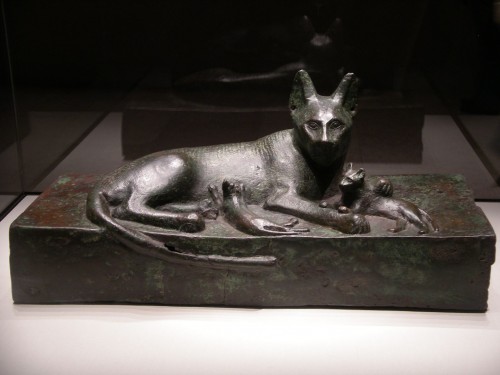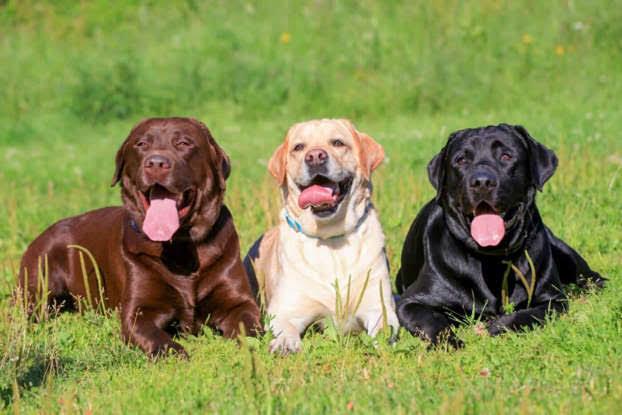
Pets as Status Symbols in Ancient Egypt: An In-Depth Look
Pets in Ancient Egypt were more than just companions—they were symbols of social status, wealth, and divine favor. Cats, dogs, and exotic animals like cheetahs or monkeys showcased the owner’s power and connection to the gods. These animals were deeply intertwined with religious practices, social hierarchies, and the afterlife, representing luxury, protection, and spirituality.
🐶 Pet Star
37 min read · 15, Feb 2025

Pets as Status Symbols in Ancient Egypt: An In-Depth Look
Ancient Egyptian society was built upon complex hierarchies that governed every aspect of life, from social standing to religious practice. Among the many symbols of wealth, power, and prestige in this civilization, one stands out as particularly intriguing: pets. In the context of Ancient Egypt, pets were more than just companions; they were valuable status symbols, reflecting the social and economic standing of their owners. Whether it was a cat, a dog, a bird, or other exotic animals, pets served as indicators of one's place in Egyptian society, both in life and in the afterlife.
In this exploration, we will delve into the significance of pets in Ancient Egypt, their roles in the lives of the elite, and the way they were treated as symbols of luxury, sophistication, and divine favor. From the domestication of animals to their association with gods and pharaohs, pets in Ancient Egypt were not only integral to daily life but also held religious and cultural importance.
The Role of Pets in Ancient Egyptian Society
Pets in Ancient Egypt were primarily owned by the upper class, including pharaohs, nobles, and high-ranking priests. The rich and powerful used pets as a means of showcasing their wealth and social status. In a society where every aspect of life was highly regulated and symbolic, owning exotic pets or animals that were associated with deities or royalty elevated an individual's stature.
The types of pets varied greatly, and different animals symbolized various things. For example, cats were revered for their grace and hunting abilities, and their connection to the goddess Bastet made them a powerful symbol of domesticity and fertility. Dogs, on the other hand, were associated with loyalty and protection, while birds were admired for their beauty and, in some cases, their connection to the divine realm.
The Domestication of Cats: Symbols of Protection and Fertility
One of the most iconic pets in Ancient Egypt was the cat. Cats were highly valued, not only for their utility in controlling vermin but also for their association with the goddess Bastet, who was often depicted as a lioness or as a woman with the head of a cat. Bastet was a goddess of home, fertility, and childbirth, and as such, cats were believed to possess qualities that could protect the home and family. Killing a cat, even accidentally, was considered a grave offense, and the punishment for such an act could be severe.
The significance of cats as status symbols in Ancient Egypt cannot be overstated. Wealthy families often kept them in their homes, and they were given preferential treatment. Cats were even mummified after death and buried with their owners, reflecting their important role in the afterlife.
Dogs as Companions and Guardians
Dogs were also prized as pets in Ancient Egypt, particularly for their roles as companions and protectors. Dogs were often seen as loyal and obedient, and many families kept them not only for companionship but also to guard their homes. The Ancient Egyptians had several breeds of dogs, some of which were bred specifically for hunting, while others were kept for their beauty or intelligence.
The dog was associated with the god Anubis, who was depicted as a jackal or as a man with the head of a jackal. Anubis was the god of mummification and the afterlife, and dogs were thought to have a special connection to the spirit world. This association with the divine further elevated the status of dogs as pets, especially for the elite.
Exotic Pets and Their Significance
In addition to more common pets like cats and dogs, the wealthy elite of Ancient Egypt also kept exotic animals. These included monkeys, gazelles, cheetahs, and even lions. Such exotic pets were not only impressive in their rarity but also symbolized the owner's wealth and access to far-flung regions of the Egyptian empire. Keeping an exotic pet was a clear indicator of one's high social status, as it demonstrated the ability to acquire rare and expensive animals.
For example, cheetahs were kept for their speed and hunting abilities, while monkeys, with their playful antics, were seen as symbols of joy and fertility. Many of these exotic animals were treated with the utmost care, often housed in lavish enclosures and provided with special food and accommodations.
Pets and Their Connection to Religion and the Afterlife
Pets in Ancient Egypt were deeply intertwined with the religious beliefs of the civilization. Animals, particularly those associated with gods and goddesses, were seen as divine beings, and they often played important roles in religious rituals. Bastet, the cat goddess, is a prime example of how pets were linked to divine forces.
The afterlife also played a major role in the treatment of pets. Just as humans were mummified and buried with grave goods to ensure a comfortable passage to the next world, pets were often mummified and placed in tombs with their owners. This practice reflected the belief that pets would accompany their owners in the afterlife, continuing their roles as protectors and companions.
The Symbolism of Animals in Egyptian Art
In addition to being kept as pets, animals were also frequently depicted in Egyptian art. Cats, dogs, and exotic animals like lions and gazelles were often shown in tomb paintings, reliefs, and sculptures. These depictions served to reinforce the status and power of the individual they were associated with, as well as to invoke the protective and divine qualities of the animals.
In art, pets were often shown in intimate settings, such as lounging in the lap of their owner or playing by their side. This not only highlighted the close bond between humans and animals but also emphasized the luxurious lifestyle of the Egyptian elite.
The Cultural and Social Implications of Pet Ownership
Pet ownership in Ancient Egypt was not just about companionship—it was a social and cultural statement. Having pets, especially exotic or rare animals, signified a high social rank and was often used as a way to impress others. The display of wealth through pet ownership was a way for the elite to distinguish themselves from the lower classes.
Furthermore, the care and attention given to pets were a reflection of an individual's character. Those who could afford to keep pets were seen as having the means to care for them properly, which in turn elevated their social status. The more extravagant the pet, the greater the indication of the owner’s wealth and refinement.
The Decline of Pet Ownership and the Changing Role of Animals
As Egyptian society evolved, so too did the role of pets. While pets remained a symbol of status for the elite, changes in political and social structures during the later periods of Egypt's history led to a shift in the way animals were viewed. The introduction of new rulers and the influence of foreign cultures brought different ideas about the role of animals in society.
In the later periods of Egyptian history, pets became more widespread, and the practice of keeping animals as status symbols began to decline. However, the legacy of pets as symbols of wealth, power, and divinity remained strong in Egyptian culture and continues to be studied and admired by modern scholars.
Conclusion:
Pets in Ancient Egypt were not mere companions; they were powerful symbols of wealth, status, and religious belief. Whether they were cats, dogs, or exotic animals, pets served to showcase the prestige of their owners and their connections to the divine and the afterlife. The treatment of pets, their depiction in art, and their role in religious rituals highlight the deep cultural significance of animals in Ancient Egyptian society. For the elite, owning pets was a way to express power, sophistication, and devotion to the gods. The legacy of pet ownership as a status symbol continues to captivate us today, offering a glimpse into the values and practices of one of the world’s most fascinating ancient civilizations.
Summary:
Pets in Ancient Egypt were not just animals but symbols of social status, wealth, and divine favor. The elite, including pharaohs and nobles, kept pets such as cats, dogs, and exotic animals to showcase their power and connection to gods like Bastet and Anubis. Pets also played important roles in religious practices, with some animals believed to possess protective and mystical qualities. The ownership of rare animals, including cheetahs and monkeys, marked the owner's wealth and influence. Pets were also associated with the afterlife, with many mummified and buried alongside their owners. Ultimately, pets in Ancient Egypt were intertwined with religion, social structures, and daily life.
Q&A Section:
Q1:What animals were commonly kept as pets in Ancient Egypt?
Ans Common pets included cats, dogs, birds, and exotic animals like cheetahs, monkeys, and gazelles. Cats and dogs were the most widespread, while exotic animals were more commonly kept by the elite.
Q2: What was the significance of cats in Ancient Egypt?
Ans: Cats were revered for their connection to the goddess Bastet, representing fertility, home, and protection. They were considered sacred, and killing a cat, even accidentally, was punishable by death.
Q3: How were dogs viewed in Ancient Egyptian society?
Ans: Dogs were symbols of loyalty, protection, and companionship. They were often associated with the god Anubis, who was linked to the afterlife and mummification.
Q4: What role did pets play in religious rituals?
Ans: Pets were believed to have divine connections and were often used in rituals to invoke protection or blessings from the gods. Cats, in particular, were closely associated with the goddess Bastet.
Q5: Why were exotic animals kept as pets in Ancient Egypt?
Ans: Exotic animals, such as cheetahs and monkeys, symbolized the owner's wealth and high social status. These animals were rare and expensive, demonstrating the elite's access to luxury.
Q6: Were pets mummified in Ancient Egypt?
Ans: Yes, pets, particularly cats, were often mummified and buried with their owners to accompany them in the afterlife. This practice reflected the belief in the animal’s role in the next world.
Q7: What was the connection between pets and the afterlife in Ancient Egypt?
Ans: Pets were believed to accompany their owners in the afterlife, continuing their roles as protectors and companions. They were mummified and buried alongside their owners to ensure they would be present in the next life.
Q8: What role did pets have in Egyptian art?
Ans: Pets were often depicted in Egyptian art, particularly in tomb paintings and sculptures, to emphasize the owner's wealth and power. These depictions also reflected the close bond between humans and animals.
Q9: What were the consequences of harming a pet in Ancient Egypt?
Ans: Harming or killing a pet, especially a cat, was considered a serious crime, often punishable by death, as pets were revered as sacred and linked to the gods.
Q10: How did pet ownership reflect social status in Ancient Egypt?
Ans: Owning exotic or rare pets was a clear indication of one's wealth and social rank. Pets symbolized luxury and were used to impress others and distinguish the elite from the lower classes.]
Q11: What was the relationship between pets and Egyptian gods?
Ans: Pets, particularly cats and dogs, were associated with specific gods like Bastet and Anubis. Cats were linked to Bastet, the goddess of home and fertility, while dogs were connected to Anubis, the god of the afterlife.
Q12: How were exotic animals treated differently from domestic pets?
Ans: Exotic animals were often treated with great care, housed in elaborate enclosures, and provided with special food. They were seen as rare and valuable possessions of the elite, demonstrating their power and prestige.
Q13: What was the significance of animals in Egyptian religious ceremonies?
Ans: Animals were believed to possess divine powers and were often involved in ceremonies to honor gods or protect the household. They were symbols of both spiritual and material wealth.
Q14: Did all Egyptians own pets?
Ans: No, pet ownership was typically reserved for the wealthy elite, including pharaohs, nobles, and priests. Lower classes generally did not keep pets as they could not afford the luxury.
Q15: How were pets depicted in Egyptian tomb art?
Ans: Pets were often shown in tomb art as companions to the deceased, reflecting the bond between humans and animals. They were sometimes shown lounging with their owners or engaging in playful activities.
Q16: What did the ownership of exotic animals signify about a person's character?
Ans: Owning exotic animals indicated wealth, sophistication, and the ability to provide for rare creatures. It also suggested that the owner was cultured and had a refined taste.
Q17: Did pets have any functional roles in Ancient Egypt?
Ans: Yes, cats were valued for their ability to control vermin, while dogs served as guards and hunting companions. Exotic animals, like cheetahs, were also kept for hunting purposes.
Q18: Why did the role of pets decline in later periods of Egyptian history?
Ans: The decline of pet ownership as a status symbol occurred due to changes in political structures and the introduction of foreign cultures that brought new ideas and priorities.
Q19: What can the study of pets in Ancient Egypt tell us about their society?
Ans: The study of pets in Ancient Egypt reveals the importance of social hierarchy, religious beliefs, and the value placed on luxury and divine favor. It highlights how even animals were intertwined with power and status.
Q20: Are there any modern parallels to the role of pets as status symbols?
Ans: Yes, in modern society, owning expensive or exotic pets can still be a status symbol, much like in Ancient Egypt. People often associate rare pets with wealth and social distinction.
Similar Articles
Find more relatable content in similar Articles

Funny Dog Memes That Will Make You Laugh Out Loud ..
Dog memes have become a global.. Read More

The Importance of Regular Vet Check-Ups for Your Dog ..
Routine veterinary check-ups a.. Read More

The Most Loyal Dog Breeds That Will Melt Your Heart..
Dogs are celebrated for their .. Read More

How to Create a Dog-Friendly Backyard ..
Designing the ideal outdoor sp.. Read More
Explore Other Categories
© 2024 Copyrights by rPets. All Rights Reserved.